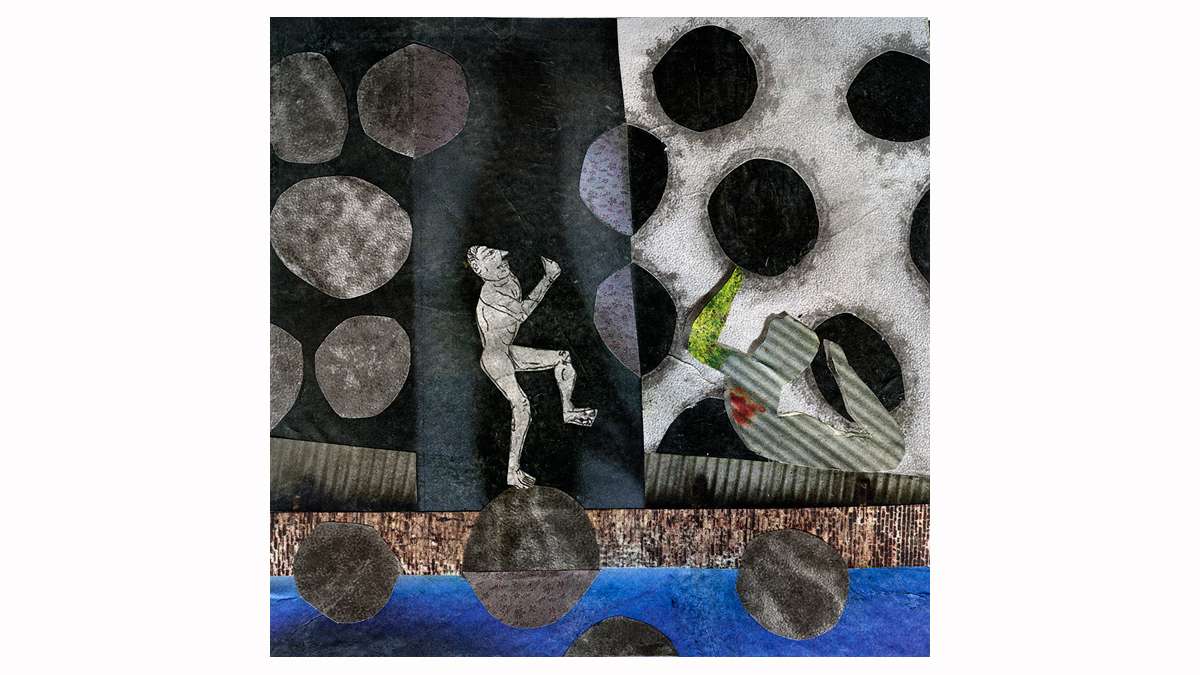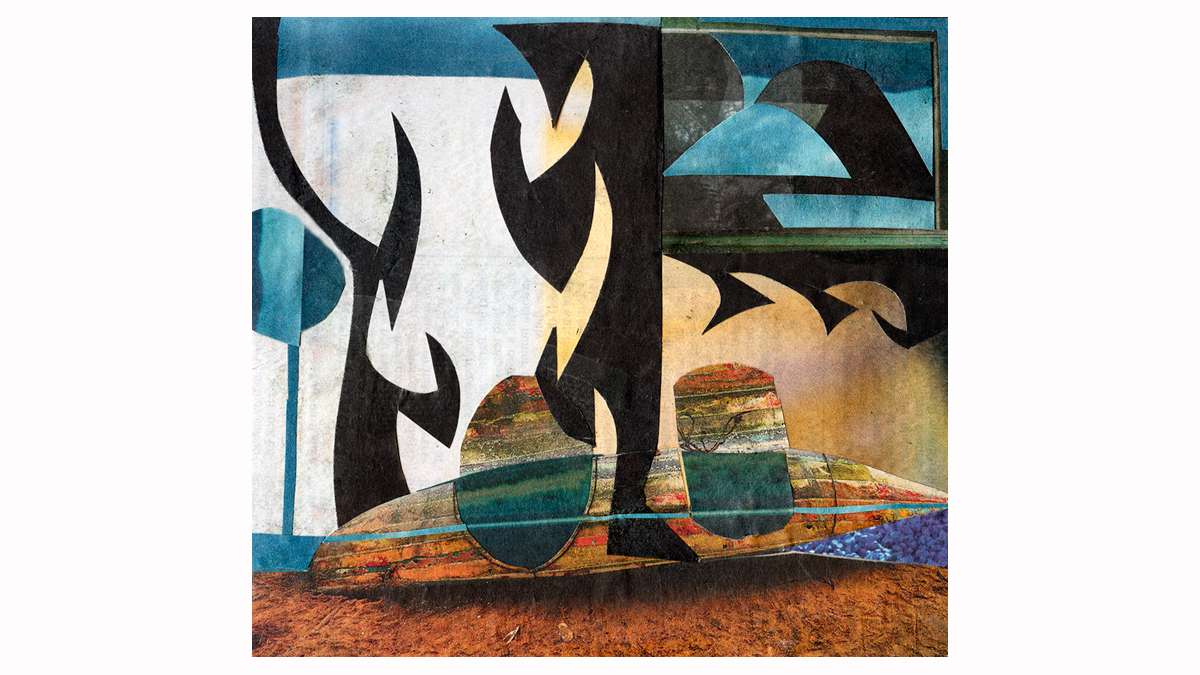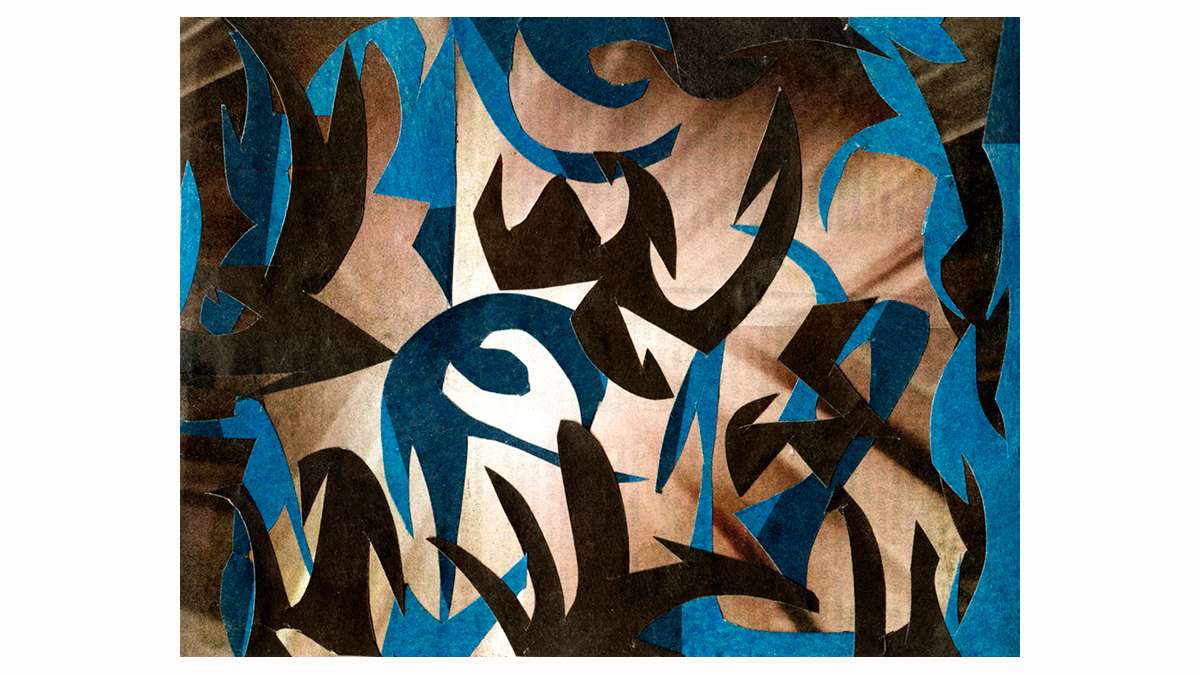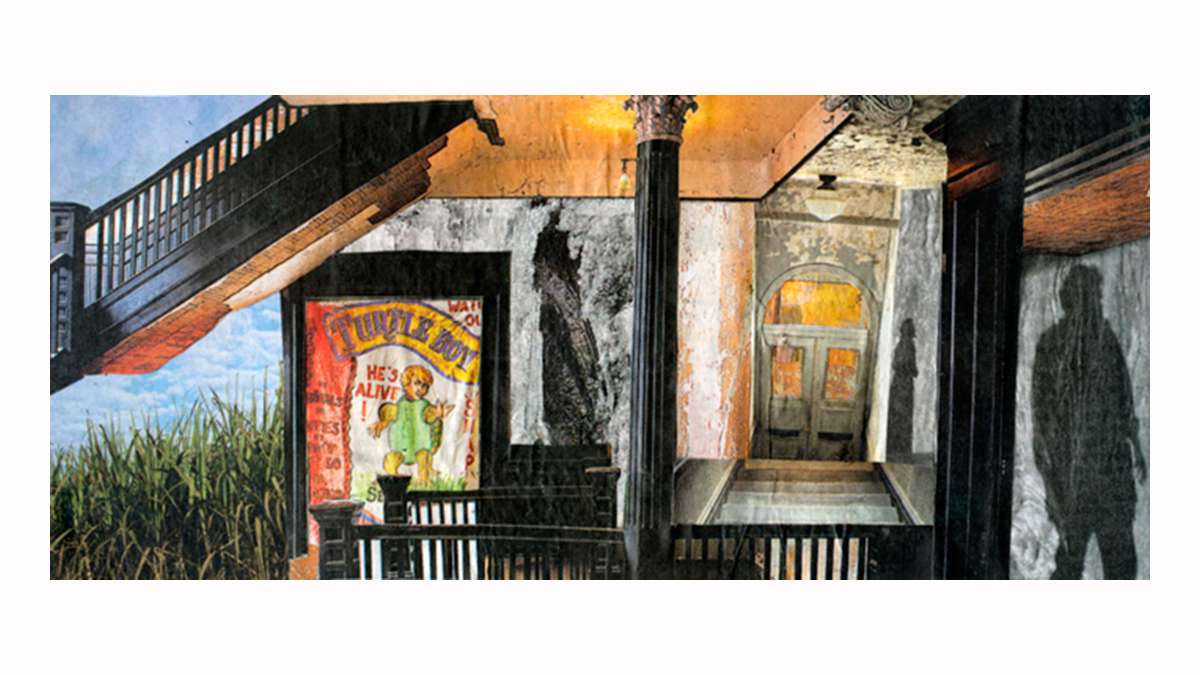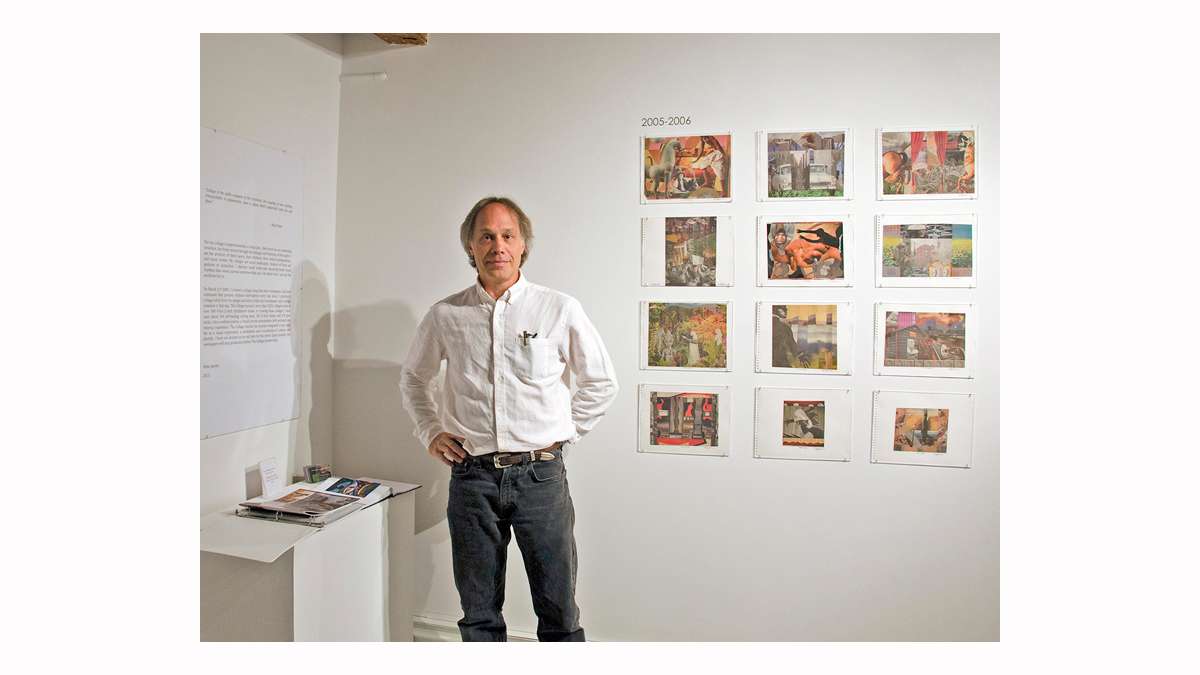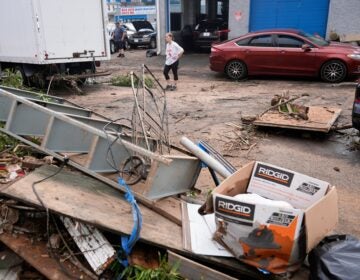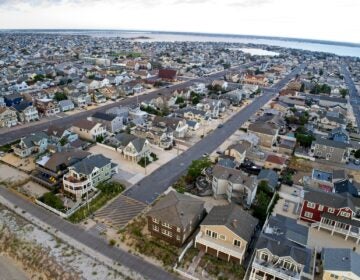Artist cuts up and reassembles the New York Times for exhibit
The daily ritual begins before dawn. A “thunk” startles a cat as the blue bundle is tossed onto the porch. An early riser removes the paper from its damp plastic sleeve and rolls it out on the breakfast table, where it catches coffee spills and cereal dribbles. And that’s only the beginning — tangential uses for the New York Times range from mulching the garden to wrapping breakables.
That Peter Jacobs begins each day cutting up the Times and pasting it into an 9-by-12-inch Strathmore watercolor journal seems like it should be less important than the intriguing images that result. And yet his process is just as intriguing.
The 54-year-old photographer, printer, curator and artist, who is married to a sculptor, has been spreading out his self-healing mat and cutting up the news with an X-Acto knife for a decade. In that time he has gone through 244 self-healing cutting boards, 342 Exacto blades and 374 glue-sticks. Peter Jacobs: The Collage Journal — The First Decade is on view at the Hunterdon Art Museum through Sept. 6.
“Each day I extract, redefine and compose the media’s elements in many ways,” he says. “They are paintings with paper, theatrical stages of abstracted color and rhythms, layers that imbue surreal narratives, symbolism hidden in humor, the irony of culture, and pure visual perception.”
And yet when we look, we ask ourselves “Where is the newspaper?” Where is the old gray lady, with her black and white text? It is, in fact, the color that Jacobs focuses on, creating new shapes and forms. He likes pattern – checkerboard and diamond patterns, dots – and architectural elements. We see archways in a Roman amphitheater, a reclining female nude, the shadow of a man surrendering to the vortex.
Subscribing to the theory that the viewer creates the meaning of a work of art, I see a turquoise-eyed bird dancing in a prison uniform. A work from 2009 shows a man with his hands holding his head in anguish. Another hand holding a disc with yet another hand rises from his head. From outside the stockade fence that surrounds him, a chorus of boys sings. And in another work, dancers reminiscent of Matisse’s cutouts fly through colonnaded spaces.
These works are dreamlike and associative. What fun a psychotherapist might have, asking patients to interpret these images.
Over the years, Jacobs has perfected his technique, incorporating more color and becoming more abstract. The works, pasted with an acid-free glue stick, have become journal entries in their discipline, the routine of doing this every day at the same time, and they reveal something deep within the artist that most would find difficult to express in a journal.
Jacobs achieves the magical act of beginning with one object – a newspaper – and ending with something completely different, so different that you cannot identify what he started with, you cannot figure out how he did it.
It seems that the artist has become addicted to the daily news. He gets edgy if there’s a blizzard that delays delivery, and has been known to print out the morning edition from the newspaper’s website if it doesn’t arrive. He fears going on cruises, where daily delivery cannot be guaranteed, and when his wife had to have surgery he brought his tools to the hospital. The process helped him manage the stress (and, by the way, the surgery went well).
Jacobs has been making collages since the 1980s. Having studied photography at SUNY Purchase, he discovered that if he brushed solvent over the images in National Geographic, the ink would bleed, creating a painterly effect. He cut them apart and reassembled them, and had his first exhibition in New York in 1983. “Where the solvent blurred the line between abstraction and representation, the collage both fractured it and reassembled the pieces into a coherent new whole,” writes Eric Levin in the exhibition catalog.
His large-scale mixed media portraits were commissioned to open the new wing of the Montclair Art Museum in 2002. After that, he began scaling down and returning to his roots in collage. And three years later, over breakfast and the morning paper, he started on this path.
He initially set out to do one every day for a year, but a year become 10.
It is also about having a visual dialogue with the news, says Jacobs, responding to politics, the environment and divisions in the country. Images of bombed London subway stations, tsunami-ravaged villages of Indonesia, and war zones in Afghanistan and Iraq all form Jacobs’ palette. Sandra Day O’Connor, Condoleeza Rice, George W. Bush and Liberace have been cut up and recycled, the original components not recognizable. What makes Collage Journal art is its ability to transform the images into something else.
“I rarely have a predetermined concept based on the news, nor an end result in mind from the start, Jacobs said. “Generally, there is a stew of what I am visually awakened by, my feelings of the moment and subconsciously, the news. I initially respond to certain elements from the newspaper — colors, textures, architecture and stories — and extract them. I continue to construct and deconstruct layers through a visual dialogue. Overall, it is a very intuitive process.” When he starts a collage, he has no idea where it will end. “No one knows what the future will bring.”
And while the news may not be beautiful, the collages are. Writes Levin in the catalog: “beauty is a prickly issue. It can soothe or stimulate, deceive, disguise, seduce… The pictures transcend their origins.”
___________________________________________________________
The Artful Blogger is written by Ilene Dube and offers a look inside the art world of the greater Princeton area. Ilene Dube is an award-winning arts writer and editor, as well as an artist, curator and activist for the arts.
WHYY is your source for fact-based, in-depth journalism and information. As a nonprofit organization, we rely on financial support from readers like you. Please give today.


